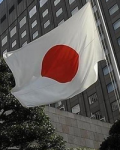-
Markets wary - But QE may not be so traumatic
August 10, 2015
THE World Bank is taking a sanguine, but cautious view of likely reaction to the first upward movement of US interest rates. It believes the first real impact will be on interest costs, which could impact emerging and developing economies over coming months . . .





